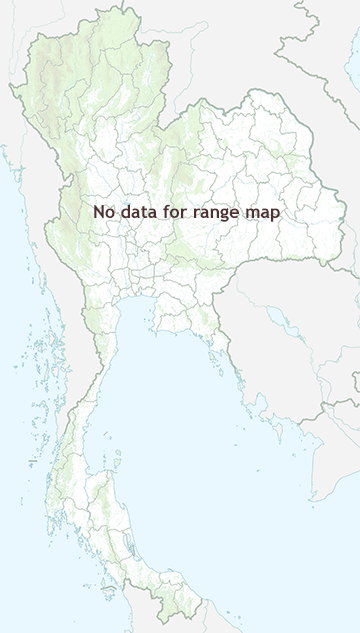Species of Thailand
Shaw's sea snake
Hydrophis curtus, George Shaw, 1802
(In Thai: งูอ้ายงั่ว, ngu aai ngua)
The Shaw's Sea Snake (Lapemis curtus, but often includes Lapemis hardwickii) is a species of sea snake. Like all Hydrophiinae sea snakes, it is a viviparous, fully marine, and front fanged elapid that is highly venomous. It is collected for a variety of purposes including human and animal food, for medicinal purposes and for their skin.
Description
This species is characterized by a wide variation in number of ventral scales and degree of parietal scale fragmentation.
Both sexes possess spiny scales along their bodies but males have more highly developed spines. This sexual dimorphism in spines may play a role in courtship or in locomotion by reducing drag.
Distribution
It is a widely distributed species and like most sea snakes is restricted to warmer, tropical waters.
Its range includes:
- Persian Gulf (Oman, Bahrain, United Arab Emirates, Iran)
- Indian Ocean (Bangladesh, Pakistan, Sri Lanka, India)
- South China Sea north to the coasts of Fujian and Shandong
- Strait of Taiwan
- Indoaustralian Archipelago
- North coast of Australia (North Territory, Queensland, West Australia)
- Philippines (Panay, etc.)
- Pacific Ocean (Myanmar (= Burma), Thailand, Indonesia, China, Japan, New Guinea)
Taxonomy
Originally considered to be two species of the genus Lapemis: Lapemis curtus and Lapemis hardwickii. Gritis and Voris (1990) examined the morphological variation of over 1, 400 specimens across its geographic range and concluded it is most likely a single species. As is convention, the species name reverts to the first description by Shaw in 1802. Recent DNA and morphological analysis has confirmed its phylogenic status as a single species.
Hydrodynamic sense
L. curtus have corpuscles (scale sensillae) concentrated on the front of their head which may be a hydrodynamic receptor. A study measuring brain response to water vibration found that L. curtus is sensitive to low amplitude (100–150 Hz) water motions. Sensing water motion is useful in locating prey, predators, or potential mates and has been demonstrated in other aquatic animals (e.g. lateral line in fish, whiskers in harbour seals).
This article uses material from Wikipedia released under the Creative Commons Attribution-Share-Alike Licence 3.0. Eventual photos shown in this page may or may not be from Wikipedia, please see the license details for photos in photo by-lines.
Scientific classification
- Kingdom
- Animalia
- Phylum
- Chordata
- Class
- Reptilia
- Order
- Squamata
- Suborder
- Serpentes
- Family
- Hydrophiidae
- Genus
- Hydrophis
- Species
- Hydrophis curtus
Common names
- English:
- Shaw's sea snake
- Hardwicke's sea snake
- Short sea snake
- Thai: งูอ้ายงั่ว, ngu aai ngua
Conservation status

Least Concern (IUCN3.1)
Photos

Range Map
